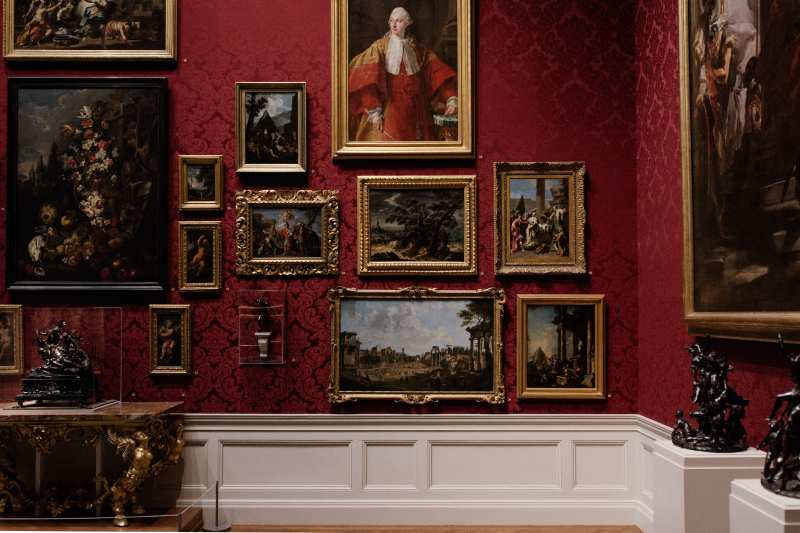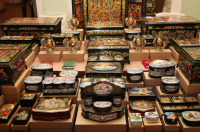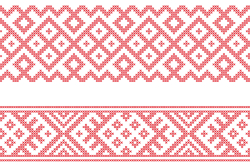
Morning in a Pine Forest (1889) by Ivan Shishkin and Konstantin Savitsky. Tretyakov Gallery, Moscow, Russia. Credit: Wikimedia Commons
This picture gained phenomenal popularity in Soviet times due to its appearance on a wrapper of Сlubfoot Bear chocolates, where it remains to this day. But its popularity also caused it to lose its real name, now it's mostly called Pine Forest or even Three Bears (there are actually four of them).
Fun fact: the beloved bears made it into the picture unplanned. While working on the painting (initially, the plot was straightforward – a fog in a dense forest) for the Tretyakov gallery, Shishkin offered his friend, the artist Savitsky, who enjoyed drawing animals for his children, to liven up the forest by adding some tiny bears. Later, Tretyakov as the owner removed the signature of the latter from the painting due to his ‘minor impact’.
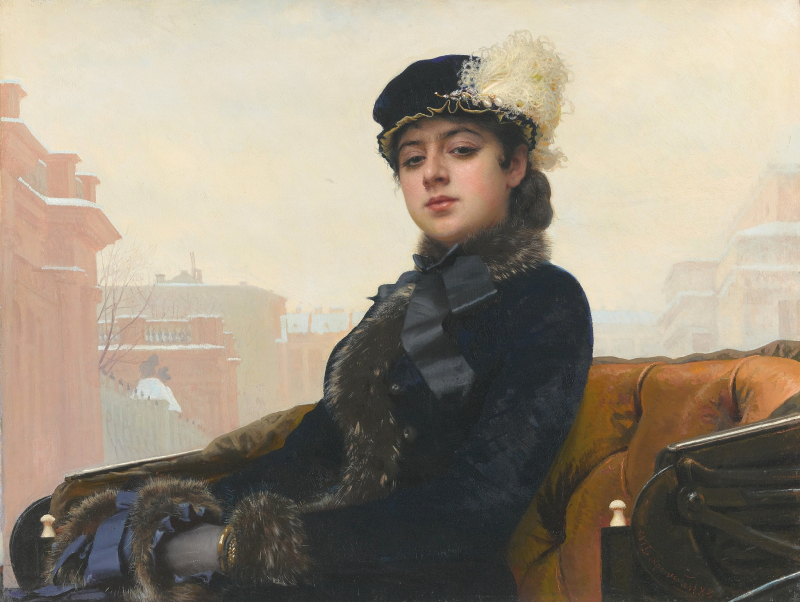
Portrait of an Unknown Woman (1883) by Ivan Kramskoi. Tretyakov Gallery, Moscow, Russia. Credit: Wikimedia Commons
Ivan Kramskoy’s most recognized painting, the Russian Mona Lisa will grace you with a magnetizing straightforward look from the walls of every apartment with a Soviet past (I counted three images of her – one in my aunt’s, one in my grandparents’, and the last one in my parents’ flat). Her identity is still a mystery, shrouded in legends but the fact remains: for the end of the 19th century, the woman in a carriage alone was considered indecent, that’s why the painting was publicly condemned during its first exhibition. But times have changed, and nowadays the unknown woman is among the most famous artworks on Russian beauty.
3. The Girl with Peaches by Valentin Serov, 1887
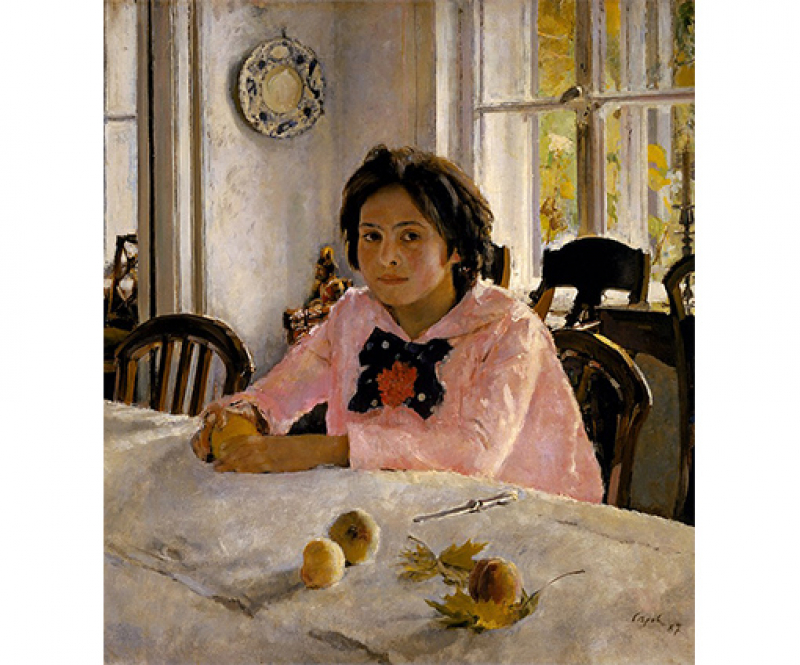
The Girl with Peaches (Portrait of V.S. Mamontova) (1887) by Valentin Serov. Tretyakov Gallery, Moscow, Russia. Credit: Wikimedia Commons
Another beautiful girl depicted, an impressionist masterpiece of Valentin Serov, saw the light when the painter was only 22. For that period, there was realism at the helm, and the represented painting style with its vividness was rather exotic and unexplored. But the artists’ talent and intuition let impressionism into Russian art for many years. Here we can see a 12-year-old Vera, daughter of Savva Mamontov, one of the richest entrepreneurs and philanthropists in Russia. The magic of the painting is somewhere between its fresh strokes and colorful reflexes, that highlight the girl's youth and restlessness.
4. Black Square by Kazimir Malevich, 1915
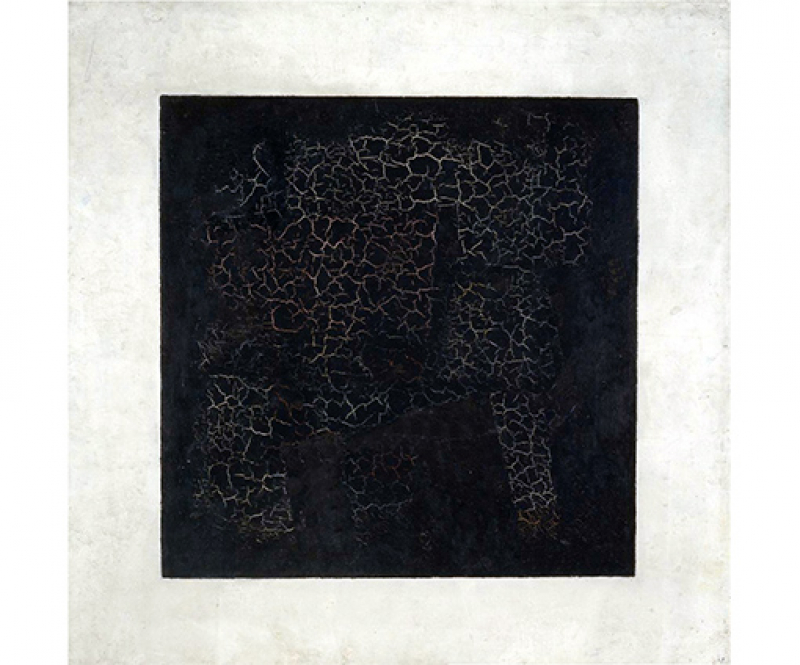
Black Square (1915) by Kazimir Malevich. Tretyakov Gallery, Moscow, Russia. Credit: Wikimedia Commons
Without going into detail about the philosophical intention of this picture, every Russian at least once has mentioned this picture in a conversation – whether as a joke or as a part of an artistic discussion. This is his most conceptually prominent work, one of the most talked-about and most famous paintings in world art. First appearing as part of a design for a stage curtain, the Black Square has become a supremacist manifesto, marking the turning point for the Russian avant-garde. Together with the lesser-known Black Circle and Black Cross, this work compiles the triptych, in which the artist explored the basic possibilities of color and composition and the role of geometric forms.
5. The Ninth Wave by Ivan Aivazovsky, 1850
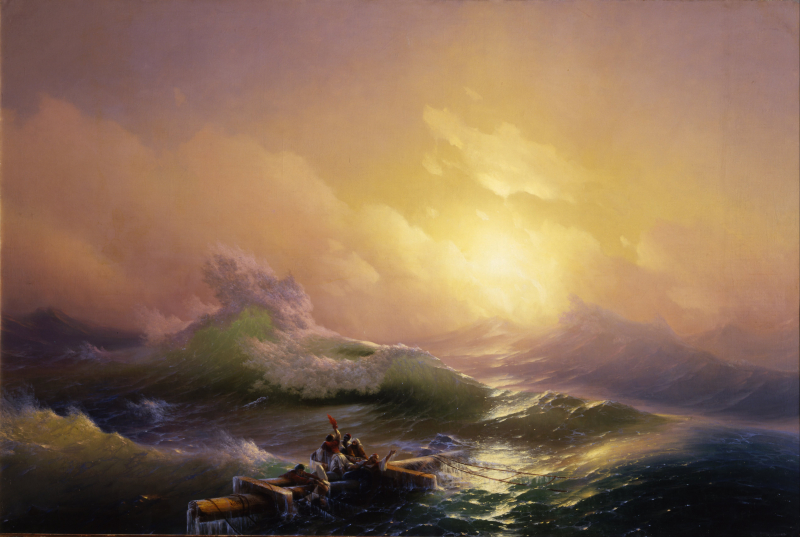
The Ninth Wave (1850) by Ivan Aivazovsky. Russian Museum, St. Petersburg, Russia. Credit: Wikimedia Commons
According to the beliefs of sailors, the Ninth Wave is the strongest and most destructive wave during a storm. This phenomenon was captured by an acclaimed master of marine art Ivan Aivazovsky, who dedicated most of his life to painting the sea, which has become his passion. The plot of this one is quite dramatic: the ship crashes, and the storm still continues, but there's hope in the bright warm light of the morning sun. Probably because of emotions, caused by the thrilling beauty of the formidable sea, the painting remains one of the most prominent works of Russian romanticism even today.
